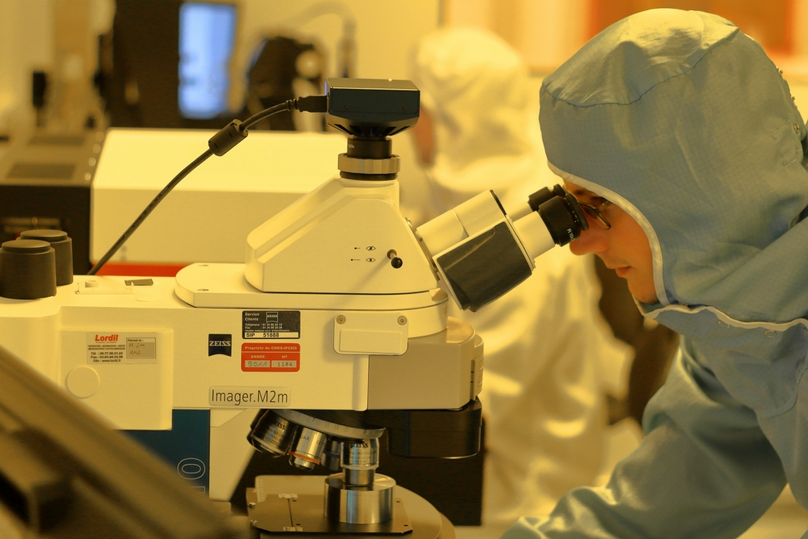Biopharmaceutical research is complex. Yet the tools to manage this complexity need not be. Harmonious integration and seamless workflow are not just ideals—they are necessities. A LIMS interface promises uncomplicated efficiency. It stands for a central nervous system in the lab that simplifies, organizes, and connects. It molds order from chaos and clarity from complexity by centralizing data, streamlining processes, and enabling easy access to vital information.
For Genemod, innovation serves as the heartbeat of advancing biopharmaceutical research. By embracing a robust lab automation system, we empower scientists to focus on what they do best—innovation. Our systems automate repetitive tasks. They minimize human error. They speed up experiments. This efficiency leapfrogs the conventional to the cutting-edge, ensuring meticulous attention to detail doesn't come at the expense of pace and productivity.
Augmenting Efficiency through LIMS Instrument Integration
Directly integrating instruments with a LIMS bypasses manual data entry, a time-consuming task, and is prone to human error. This seamless connection allows for automatic data transfer, ensuring researchers can devote their time to more critical functions than data transcription. Moreover, this setup significantly speeds up the workflow, as data from experiments are immediately available within the LIMS for analysis.
Secondly, the time saved translates directly into cost savings. Efficiency in the lab means more experiments can be conducted within the same timeframe, increasing the lab's output without additional resources. This aspect is particularly important for labs operating on tight budgets or those looking to maximize the return on their LIMS system cost investment.
Boosting Accuracy with LIMS Interfacing
One of the primary benefits of interfacing instruments with LIMS is the notable increase in data accuracy. When data flows directly from the source to the system, the risk of human error in data entry is eliminated. This accuracy is critical in research where even minor mistakes can lead to significant setbacks or flawed results.
Moreover, this heightened accuracy helps maintain compliance with regulatory standards, a key concern for many labs. With precise, unaltered data entering the LIMS, labs can ensure their data integrity is beyond reproach, making audits and regulatory reviews less stressful and more likely to be successful.
Enhancing Data Consistency in LIMS
Integrating instruments with LIMS increases efficiency and accuracy and greatly enhances data consistency. With all instruments speaking the same "language" and feeding data directly into the LIMS, inconsistencies that might arise from manual entry or disparate systems are avoided. This uniformity is crucial when comparing data sets or tracking progress over time.
Furthermore, this consistency lays a foundation for more robust data analytics. Labs can extract meaningful insights more easily with a reliable data set, leading to breakthroughs and advancements. Ultimately, the investment in interfacing instruments with the LIMS—an aspect tied to the initial LIMS system cost—provides a platform for innovation and discovery far outweighs its cost.
Ensuring Regulatory Compliance with LIMS Instrument Interfacing
Interface systems between laboratory equipment and LIMS are gaining recognition for upholding regulatory compliance. These systems eliminate a significant portion of the manual processes, greatly reducing potential errors and inconsistencies that can lead to compliance issues. Compliance with regulations such as FDA’s 21 CFR Part 11, which sets forth the criteria under which electronic records are deemed trustworthy, is more manageable with interfacing. This is because the automated process with instrument interfacing creates a detailed and auditable trail of data handling.
Integrating instruments to a LIMS ensures that all data capture is consistent with prescribed protocols, a necessity for laboratories working under rigorous standards. Automated data transfer decreases the chances of compliance violations and streamlines the effort required to produce the documentation of inspection needed. Regular updates and maintenance, features often included in the LIMS system cost, continually refine these systems to match changing regulations.
Facilitating Real-Time Data Analysis with LIMS
The ability to perform real-time data analysis is a significant advantage of instrument interfacing with LIMS. This up-to-the-minute access to data means decisions can be made swiftly, allowing for a more dynamic response to experimental results. Real-time analysis supports immediate troubleshooting, saving valuable resources and keeping projects on track. Moreover, it opens the door to more interactive experimentation where hypotheses can be tested and adjusted without delay, dramatically speeding up the research cycle.
Instrument interfacing also makes the breadth of historical and current data readily accessible for comparative analysis, providing insights that might have been overlooked in a less connected system. This immediate availability of information enhances the decision-making process, allowing researchers to draw on comprehensive data sets from their LIMS, leading to more informed conclusions and potential breakthroughs in their work.
Empower Your Research Team
Our solutions embody the best lab inventory management software. They are designed to disrupt the status quo. To turn chaotic stockrooms into models of efficiency. Genemod's inventory system understands the language of the lab. It tracks samples, reagents, and kits with precision. It predicts needs, streamlines ordering, and ensures your resources are a click away. If this is what you’re looking for, get in touch with us today. This is not just about managing resources but amplifying their potential.


















